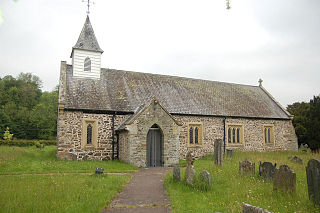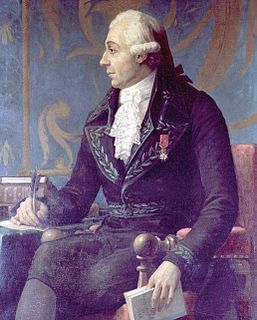
Charles Messier was a French astronomer most notable for publishing an astronomical catalogue consisting of 110 nebulae and star clusters, which came to be known as the Messier objects. The purpose of the catalogue was to help astronomical observers, in particular comet hunters like himself, distinguish between permanent and transient visually diffuse objects in the sky.

The Messier objects are a set of 110 astronomical objects cataloged by the French astronomer Charles Messier in his Catalogue des Nébuleuses et des Amas d'Étoiles.
Because Messier was interested in finding only comets, he created a list of non-comet objects that frustrated his hunt for them. The compilation of this list, in collaboration with his assistant Pierre Méchain, is known as the Messier catalogue. This catalogue of objects is one of the most famous lists of astronomical objects, and many Messier objects are still referenced by their Messier number.
The catalogue includes some astronomical objects that can be observed from Earth's Northern Hemisphere such as deep-sky objects, a characteristic which makes the Messier objects extremely popular targets for amateur astronomers.

Jean Baptiste Joseph, chevalier Delambre was a French mathematician and astronomer. He was also director of the Paris Observatory, and author of well-known books on the history of astronomy from ancient times to the 18th century.

Messier 107 or M107, also known as NGC 6171, is a very loose globular cluster in the constellation Ophiuchus, and is the last globular cluster in the Messier Catalogue. It was discovered by Pierre Méchain in April 1782, then independently by William Herschel in 1793. Herschel described it as a "globular cluster of stars, large, very rich, very much compressed, round, well resolved, clearly consisting of stars". It was not until 1947 that Helen Sawyer Hogg added it and three other objects discovered by Méchain to the list of Messier objects. The cluster is located 2.5° south and slightly west of the star Zeta Ophiuchi.
Messier 102 is a galaxy listed in the Messier Catalogue that has not been identified unambiguously. Its original discoverer Pierre Méchain later said that it was a duplicate observation of Messier 101, but more recent historical evidence favors that it is NGC 5866, although other galaxies have been suggested as possible identities.

Messier 65 is an intermediate spiral galaxy about 35 million light-years away in the constellation Leo. It was discovered by Charles Messier in 1780. Along with M66 and NGC 3628, M65 forms the Leo Triplet, a small group of galaxies.

Messier 103 is an open cluster where a few thousand stars formed in the constellation Cassiopeia. This open cluster was discovered in 1781 by Charles Messier's friend and collaborator Pierre Méchain. It is one of the most distant open clusters known, with distances of 8,000 to 9,500 light-years from the earth and ranging about 15 light-years apart. There are about 40 member stars within M103, two of which have magnitudes 10.5, and a 10.8 red giant, which is the brightest within the cluster. Observation of M103 is generally dominated by the appearance of Struve 131, though the star is not a member of the 172-star cluster. M103 is about 25 million years old.

Llansantffraid-ym-Mechain is a village and post town in Powys, mid Wales, close to the border with Shropshire in England, about 7 miles (11 km) south west of Oswestry and 8 miles (13 km) north of Welshpool. It is on the A495 road and is at the confluence of the River Vyrnwy and the Afon Cain. The population as of the 2011 UK Census was 1,415.

The Recreation Ground, usually referred to as Treflan, is a football stadium in Llansantffraid-ym-Mechain, Powys, Wales and is the home of Mid Wales League Division One club Llansantffraid Village. The Recreation Ground was the home of Welsh Premier League team The New Saints until they moved to Park Hall in nearby Oswestry, England, the former home of Oswestry Town F.C.
Ieuan Dyfi was a Welsh language poet.
The Battle of Mechain was fought in 1069 in Powys, Wales, for rule of the Welsh kingdoms of Gwynedd and Powys.

Llanfechain is a small village and community in Powys, Wales, between Llanfyllin and Llansantffraid-ym-Mechain on the B4393 road. Historically it was part of Montgomeryshire. Afon Cain runs through the village. It has a population of less than 500.
Walter Davies, commonly known by his bardic name Gwallter Mechain, was a Welsh poet, editor, translator, antiquary and Anglican clergyman.

Manafon is a small rural community located in the hills of Montgomeryshire, the Northern part of the Welsh county of Powys. The Parish focuses on the valley of the River Rhiew that runs west to east into the River Severn". The community of Manafon consists of "two main villages within about a mile of one another, Manafon and New Mills. The remainder of the population lives in scattered farms and dwellings and in the small rural settlement of The Green."
Events from the year 1804 in France

Owain Fychan ap Madog (c.1125-1187). Styled Lord of Mechain Is Coed and one of the sons of Madog ap Maredudd. His mother was Susanna, daughter of Gruffudd ap Cynan.

Llansantffraid railway station is a former station in Llansantffraid-ym-Mechain, Powys, Wales. The station opened in 1863 and closed in 1965. The station's two signal boxes, built by Dutton & Co., were moved to Oswestry and Shrewsbury.













